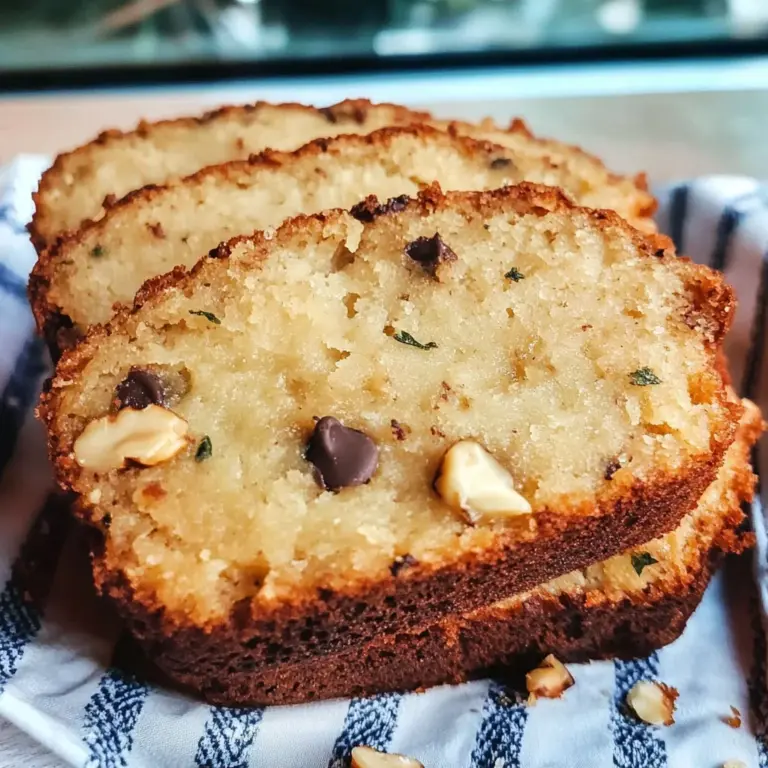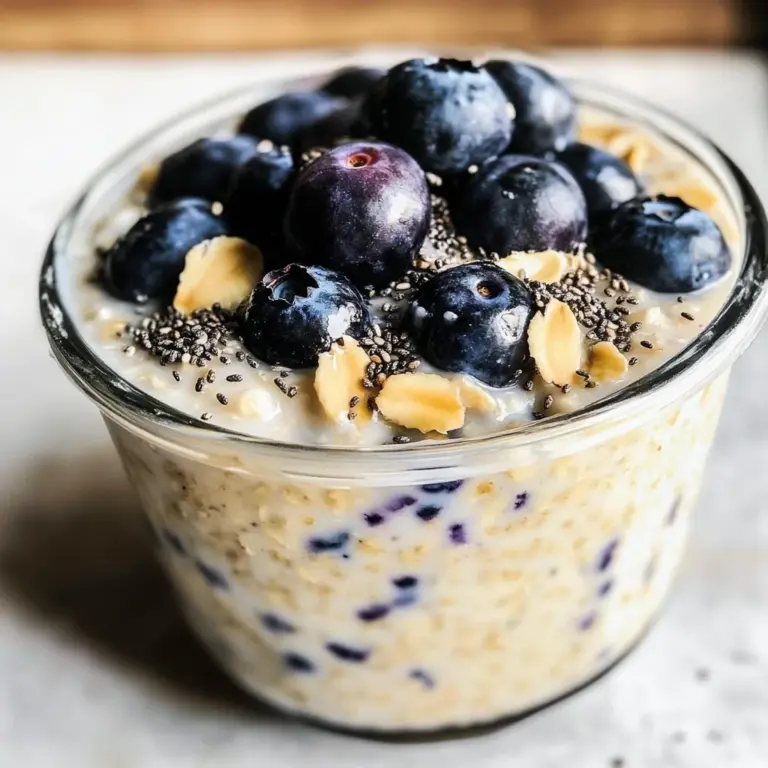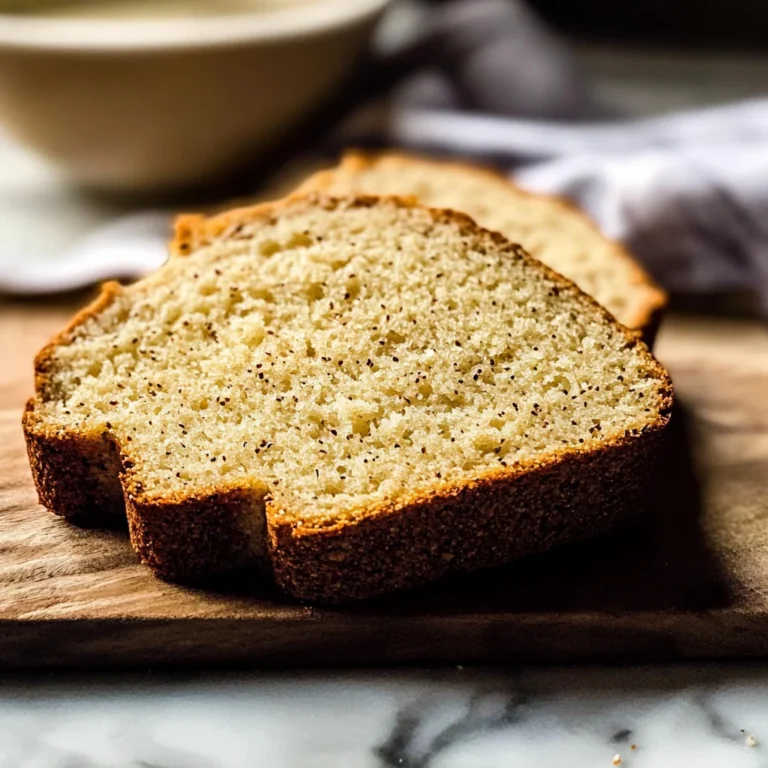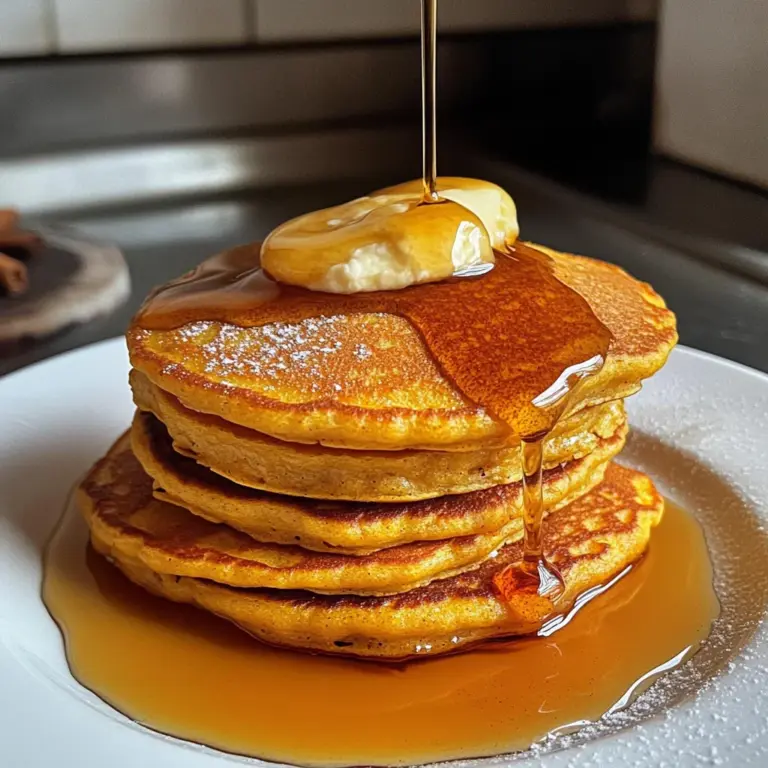Gluten-Free Pita Bread
This Gluten-Free Pita Bread is a delightful alternative to traditional versions, perfect for any occasion! Whether you’re filling it with fresh vegetables, hummus, or your favorite spreads, this pita bread delivers a tender and fluffy texture without the gluten. With just a handful of ingredients and a straightforward process, you’ll love making this versatile flatbread at home.
Why You’ll Love This Recipe
- Easy to Make: This recipe requires only five main ingredients and minimal prep time, making it accessible for everyone.
- Versatile: Use this gluten-free pita bread for wraps, sandwiches, or as an accompaniment to dips and salads.
- Healthier Choice: With no preservatives or additives, you can enjoy a fresh product that fits your dietary needs.
- Great Flavor: The combination of rice flour and tapioca creates a deliciously light taste that complements various fillings.
- Perfect for Meal Prep: Make a batch in advance and freeze them for quick meals throughout the week.
Tools and Preparation
To get started on this gluten-free pita bread journey, you’ll need some essential tools to ensure success.
Essential Tools and Equipment
- Mixing bowl
- Rolling pin
- Baking sheet
- Parchment paper
Importance of Each Tool
- Mixing bowl: A large mixing bowl allows for easy combining of ingredients while ensuring everything mixes thoroughly.
- Rolling pin: This tool helps create evenly shaped pitas, crucial for achieving that classic pocket structure.
- Baking sheet: A sturdy baking sheet provides even heat distribution during cooking, resulting in perfectly baked pitas.

Ingredients
To create your homemade gluten-free pita bread, gather the following ingredients:
For the Dough:
- 3/4 cup + 2 tbsp warm water
- 10 g fresh yeast (see notes)
- 1 1/2 tsp organic cane sugar
- 1 cup white rice flour (see notes for a version with regular flour)
- 2/3 cup tapioca flour
- 2 tsp psyllium husk powder
- 1/2 tsp salt
- 2 tsp oil
How to Make Gluten-Free Pita Bread
Step 1: Activate the Yeast
- In a mixing bowl, combine warm water with the fresh yeast and organic cane sugar.
- Stir gently to dissolve the yeast and let it sit for about 5–10 minutes until frothy.
Step 2: Mix Dry Ingredients
- In another bowl, whisk together the white rice flour, tapioca flour, psyllium husk powder, and salt until well combined.
Step 3: Combine Wet and Dry Ingredients
- Once the yeast mixture is frothy, pour it into the bowl with dry ingredients.
- Add oil and mix until a dough forms. You may need to knead it lightly with your hands.
Step 4: Shape the Dough
- Divide the dough into equal portions (about 5).
- Roll each portion into a ball before flattening it into a disk shape using a rolling pin.
Step 5: Bake the Pitas
- Preheat your oven to 450°F (232°C).
- Line your baking sheet with parchment paper.
- Place each flattened disk onto the baking sheet and bake for about 10 minutes or until they puff up slightly.
Step 6: Cool and Serve
- Once baked, remove from the oven and let them cool on a wire rack.
- Enjoy warm or store in an airtight container for later use!
How to Serve Gluten-Free Pita Bread
Gluten-free pita bread is versatile and can complement a variety of dishes. Whether you’re hosting a gathering or enjoying a quiet meal, here are some creative ways to serve this delightful flatbread.
With Dips
- Hummus: A classic pairing, this creamy chickpea dip is perfect for spreading on your pita.
- Baba Ganoush: This smoky eggplant dip adds a rich flavor that goes wonderfully with warm pita.
- Tzatziki: A refreshing yogurt-based sauce with cucumber and herbs, ideal for cooling down spicy dishes.
As Wraps
- Veggie Wraps: Fill your pita with grilled vegetables, lettuce, and a drizzle of tahini for a satisfying meal.
- Chicken Salad: Stuff it with shredded chicken and your favorite salad ingredients for a quick lunch.
With Salads
- Greek Salad: Use torn pieces of pita to scoop up this fresh mix of tomatoes, cucumbers, olives, and feta.
- Falafel Salad: Serve your pita alongside crispy falafel and greens drizzled with dressing.
How to Perfect Gluten-Free Pita Bread
Creating the perfect gluten-free pita bread can be straightforward with these helpful tips. Follow them to ensure your flatbreads turn out fluffy and delicious every time.
- Use Fresh Yeast: Fresh yeast activates better than dry yeast, giving you a lighter texture.
- Measure Flours Accurately: Using precise measurements will ensure the right consistency in dough.
- Let it Rise Properly: Allow the dough enough time to rise; this improves the bread’s fluffiness.
- Preheat Your Oven: Ensuring your oven is hot helps the pitas puff up beautifully when baking.
- Experiment with Flour Blends: Different combinations of gluten-free flours can yield different textures; feel free to experiment!
Best Side Dishes for Gluten-Free Pita Bread
Gluten-free pita bread pairs well with many side dishes that enhance its flavors. Here are some great options to consider:
- Roasted Vegetables: Seasonal veggies roasted until caramelized make a hearty side dish.
- Chickpea Salad: A light salad combining chickpeas, herbs, and lemon juice provides freshness.
- Stuffed Grape Leaves: These savory bites filled with rice and spices offer an exotic touch to your meal.
- Tabbouleh: A bulgur-free version made with quinoa or cauliflower rice brings a refreshing herbaceous flavor.
- Spiced Lentil Soup: A warm bowl of lentil soup adds comfort and pairs perfectly with dipping.
- Grilled Chicken Skewers: Marinated chicken skewers offer protein that complements the soft bread beautifully.
Common Mistakes to Avoid
Making gluten-free pita bread can be simple, but there are common pitfalls to watch out for. Here are the mistakes to avoid for perfect results.
- Using cold water: Always use warm water to activate the yeast properly and ensure a fluffy texture.
- Skipping the resting time: Allowing the dough to rest is crucial for achieving the right consistency and flavor. Don’t rush this step!
- Not measuring ingredients accurately: Gluten-free baking requires precise measurements. Use a kitchen scale for best results.
- Overworking the dough: Too much kneading can lead to dense pita breads. Mix just until combined for a light and airy bread.
- Ignoring cooking times: Keep an eye on your pita as it cooks; overbaking can lead to dryness. Aim for a golden brown color.

Storage & Reheating Instructions
Refrigerator Storage
- Store your gluten-free pita bread in an airtight container.
- It will stay fresh for up to 3 days in the refrigerator.
Freezing Gluten-Free Pita Bread
- Wrap each pita in plastic wrap or aluminum foil before placing them in a freezer-safe bag.
- You can freeze them for up to 2 months without losing quality.
Reheating Gluten-Free Pita Bread
- Oven: Preheat your oven to 350°F (175°C). Wrap pita in foil and heat for about 10 minutes.
- Microwave: Place a damp paper towel over the pita and microwave on high for 15-20 seconds.
- Stovetop: Heat a skillet over medium heat and warm each pita for about 1 minute on each side.
Frequently Asked Questions
Here are some common questions about gluten-free pita bread that may help you with your baking journey.
How do I make gluten-free pita bread soft?
To ensure your gluten-free pita bread remains soft, include psyllium husk powder, which retains moisture during baking.
Can I use different flours for gluten-free pita bread?
Yes! You can experiment with other gluten-free flours like almond flour or oat flour, but adjust the ratios accordingly for best results.
Is gluten-free pita bread healthy?
Gluten-free pita bread can be a healthy choice when made with whole grains and natural ingredients, offering fiber and nutrients without gluten.
What is the best way to store leftover gluten-free pita bread?
Store any leftover gluten-free pita bread in an airtight container at room temperature or refrigerate it if you plan to keep it longer.
Can I make this recipe vegan?
Absolutely! This gluten-free pita bread recipe is already vegan-friendly, as it does not contain any animal-derived ingredients.
Final Thoughts
This gluten-free pita bread recipe is not only easy to prepare but also versatile enough to suit various meals. You can enjoy it as a side with dips, fill it with your favorite ingredients, or even use it as a wrap. Don’t hesitate to customize it with herbs or spices according to your taste!

Gluten-Free Pita Bread
This Gluten-Free Pita Bread is a delightful and versatile flatbread that will elevate any meal. With its tender and fluffy texture, it serves as an excellent vehicle for fresh fillings, dips, or even as a standalone snack. Made from simple ingredients like rice flour and tapioca, this easy recipe ensures you can enjoy homemade pita bread without gluten. Perfect for wraps, sandwiches, or alongside your favorite spreads, you’ll love how quickly it comes together. Plus, it’s a healthier choice free from preservatives, allowing you to savor the freshness in every bite. Whether you’re meal prepping or entertaining guests, this pita bread is sure to impress!
- Total Time: 25 minutes
- Yield: Approximately 5 servings 1x
Ingredients
- 3/4 cup + 2 tbsp warm water
- 10 g fresh yeast
- 1 1/2 tsp organic cane sugar
- 1 cup white rice flour
- 2/3 cup tapioca flour
- 2 tsp psyllium husk powder
- 1/2 tsp salt
- 2 tsp oil
Instructions
- Activate the yeast by combining warm water with fresh yeast and sugar in a mixing bowl. Let sit until frothy (5–10 minutes).
- In another bowl, mix white rice flour, tapioca flour, psyllium husk powder, and salt.
- Pour the yeast mixture into the dry ingredients along with oil. Mix until a dough forms; knead lightly if needed.
- Divide dough into equal portions (about 5) and roll each into disks using a rolling pin.
- Preheat oven to 450°F (232°C) and line a baking sheet with parchment paper.
- Bake pitas for about 10 minutes or until they puff slightly.
- Cool on a wire rack before serving.
- Prep Time: 15 minutes
- Cook Time: 10 minutes
- Category: Bread
- Method: Baking
- Cuisine: Mediterranean
Nutrition
- Serving Size: 1 serving
- Calories: 120
- Sugar: 0g
- Sodium: 160mg
- Fat: 2g
- Saturated Fat: 0g
- Unsaturated Fat: 1g
- Trans Fat: 0g
- Carbohydrates: 25g
- Fiber: 3g
- Protein: 2g
- Cholesterol: 0mg






